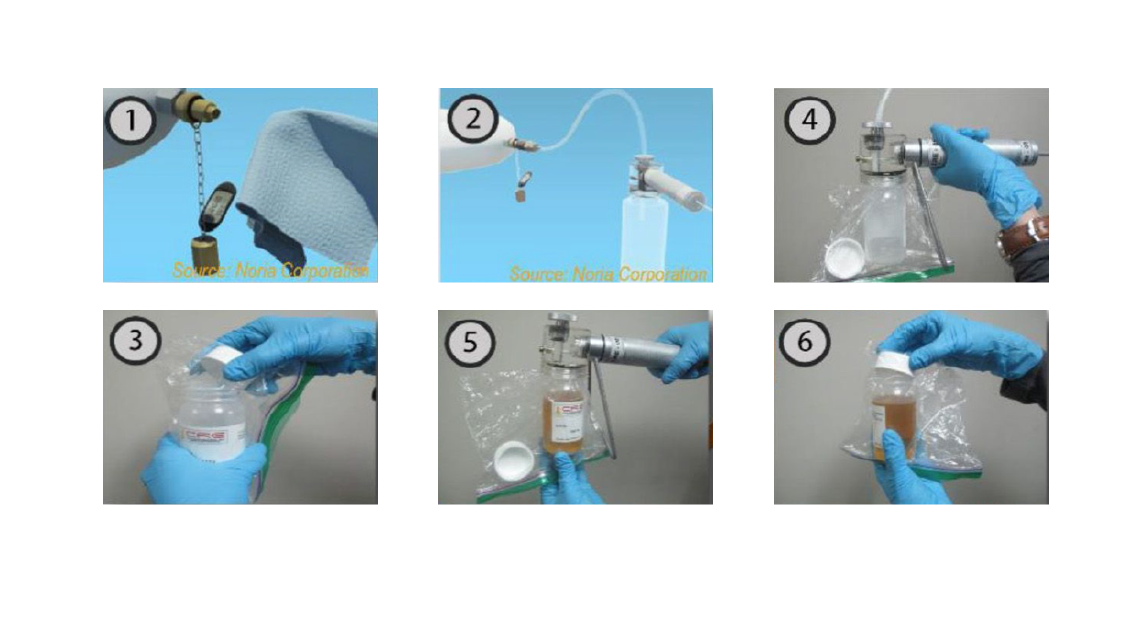It pays to have a used oil analysis performed on a regular basis by a qualified laboratory, whether you operate heavy-duty on- or off-road vehicles or a piece of fixed industrial equipment.
Checking the oil running through your equipment for impurities and overall condition can help you identify the best drain intervals, maintenance plans, and activities based on the sources of wear and contamination levels shown in your report. For example, if the examination reveals high levels of dirt and dust, you may have an air leak or need to replace your filter or breather or install an offline-filtration system. A used oil analysis will reveal the issues that need to be addressed in order to protect your equipment.
It is great if you already have a program in place. A strong oil analysis program is not only supported by a credible oil analysis laboratory but by excellent oil sampling practices, as well. However, if sampling is not done right, you are losing opportunities to improve the overall condition of your machine and the productivity of your team and to earn back your investment. For best practices in oil sampling, location is important but it is not the only consideration that you need to take. Here are some improvements you can implement to optimize your oil sampling program:
Oil Sampling Program Optimization
1. Take samples from the same location every time.
It's ideal to take a sample from a running system stream while the equipment is still running and the oil is still warm but it also matters that you sample from the same location every time. Otherwise, the results from one analysis to the next may be very different. When you sample from a different location, you need to declare this to your partner laboratory because the results of your current sample should not be trended with your past samples of different locations. If this was not made transparent to your laboratory, the interpretation and recommendation may not be as accurate.

2. Take samples on a regular basis.
If you wait too long between samples, say 1,000 hours instead of 100, you'll notice strange wear, oil, and contamination patterns and trends. If you are seldom conducting sampling and testing you may not be monitoring the Mean Time Between Failures (MTBF) as effectively as possible which affects your level of reliability and maintainability. Sample frequently and consistently enough for the lab to establish a strong baseline against which to track changes in your system.
3. Never take a sample from the drain pan
Some people believe it is the most convenient location for taking a sample, however, it is actually full of debris from previous drains and debris around the drain cap. Getting samples from the drain will poorly give you information on the current condition of your machine.
4. Use a dry, clean bottle.
Wait until you're ready to take a sample before opening the bottle. Once you receive the sample, make sure it is clean and seal it fast. You're probably only consuming 4 ozs. to portray an oil reservoir with hundreds or thousands of gallons of oil in it. The lab will only utilize a small portion of that for each of the numerous tests it does. Also, never forget to flush before collecting your samples.

5. Fill the bottle while providing enough ullage.
This space between the cap and the topmost level of oil is known as ullage. Allow a small amount of ullage in the bottle for the lab technician to be able to shake it to disperse particles that have accumulated at the bottom.
6. Label the sample carefully and precisely.
Along with the brand and product name, make careful notes of the exact oil viscosity or SAE grade. Show the equipment's type, the number of hours it's been on, and the time since the last oil change. If you don't identify the equipment with the same nomenclature each time, the computer will think it's a new piece of equipment and create a new database. All pieces of information you are asked to provide the laboratory are critical in setting up the baselines and trend analysis of your sample. The more precise information you offer the lab, the more precise an analysis you'll get.
7. Assign a sampler to the program.
To ensure consistency, you should have one person who becomes familiar with the procedure.
8. Send it in quickly
Don't put samples on a shelf and forget about them until the end of the year. Send them right away, and when you get them, examine the findings. No matter how accurate you collected your samples, the results are no longer relevant, and therefore, no longer reliable when sent and tested late.
Getting Started
Establishing your excellent oil sampling program on top of an excellent oil analysis program may be a tall order for everyone with budget constraints, outdated maintenance culture, and a lack of management support. Talk to CRE Philippines to know how we can support your sampling needs. CRE MachineDiagnostics™ Program aims to diagnose machine incipient failure through oil analysis entailing cost. With CRE, you will be confident to start your oil analysis program with our full support every step of the way.
Source: machinerylubrication.com


